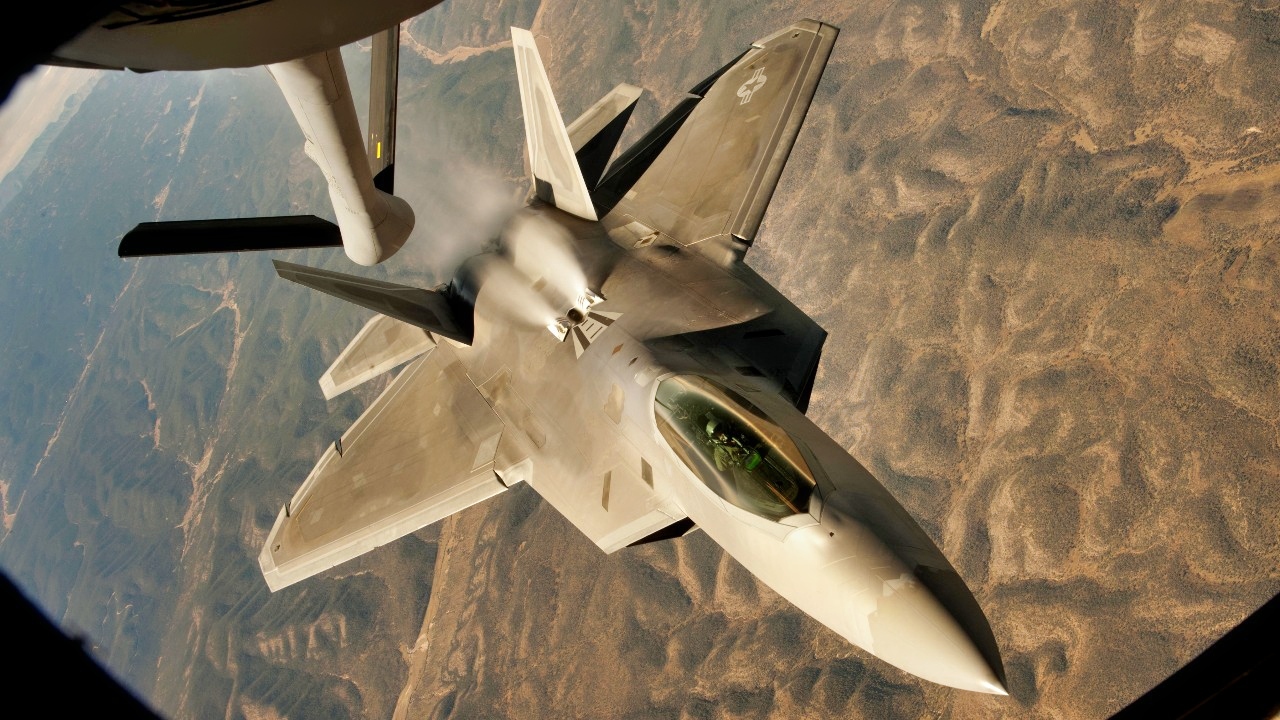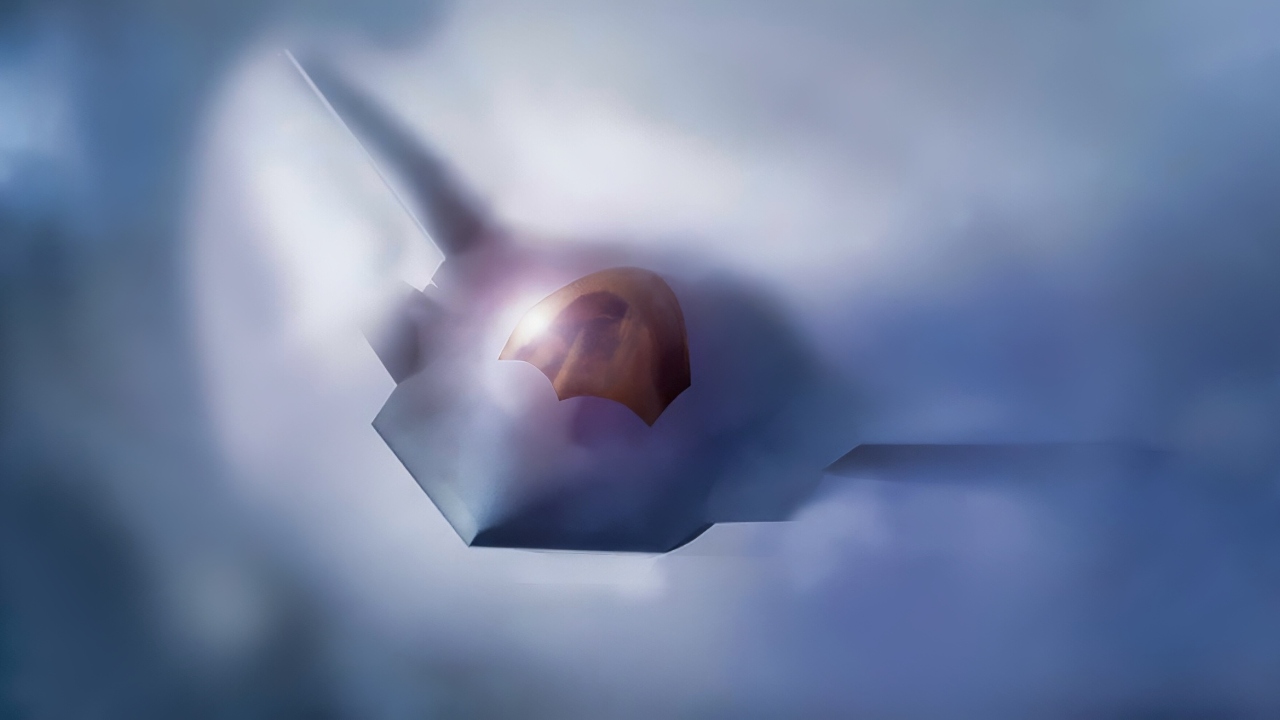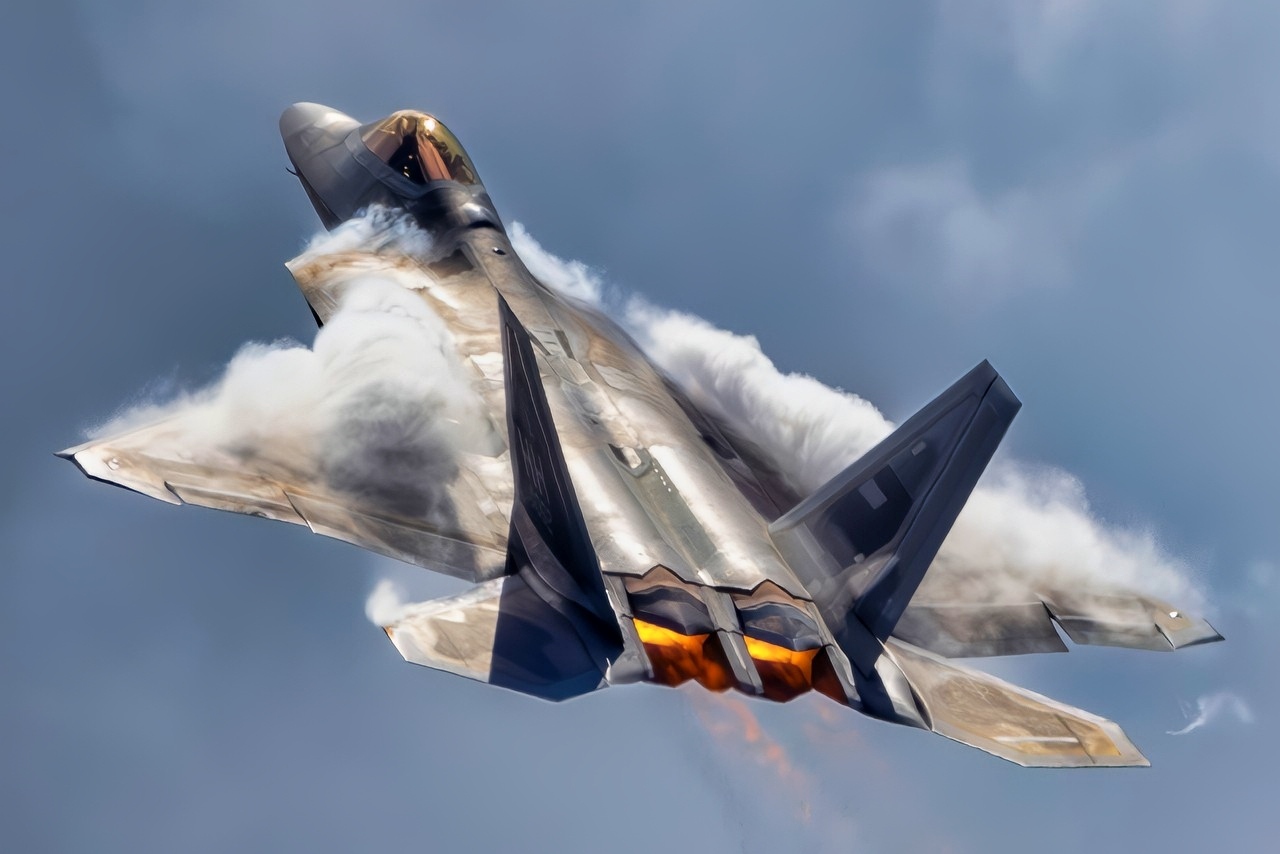Key Points and Summary – Despite playing a vital role in escorting B-2 bombers during the “Operation Midnight Hammer” strikes on Iran in June 2025, the F-22 Raptor is still heading for retirement.
-The aircraft remains a cornerstone of U.S. air dominance, but its small, aging, and expensive-to-maintain fleet was never produced at the originally planned scale.

A U.S. Air Force F-22 Raptor backs away from a KC-135 Stratotanker after conducting an in-flight refueling during a training mission over central New Mexico on Oct. 23, 2013. The Raptor is assigned to the 49th Fighter Wing at Holloman Air Force Base, N.M. The Stratotanker is assigned to McConnell Air Force Base, Kan. DoD photo by Airman 1st Class John Linzmeier, U.S. Air Force. (Released)
-With the more advanced and sustainable 6th-generation F-47 NGAD fighter now expected to arrive sooner than planned, the F-22 will serve as a critical “bridge” to the next era of airpower before being phased out within the next decade.
The F-22 Raptor Long Goodbye
During Operation Midnight Hammer, the U.S. Air Force deployed F-22 Raptors alongside B-2 Spirit bombers in coordinated strikes against Iran’s nuclear sites at Fordow, Natanz, and Isfahan.
More than 125 aircraft participated in the operation, which targeted hardened underground facilities with precision-guided munitions, including the 30,000-lb Massive Ordnance Penetrator (MOP) bomb.
Despite playing a vital role in the operation, however, the F-22 was never the focus of media reports in the wake of the strike. The B-2 was ultimately responsible for dropping the bombs that set back Iran’s nuclear program by years – or months, depending on your sources – and has since been the face of those historic strikes.
But the F-22’s role in the strikes also reflects a broader point: both of the aircraft that were central to this mission – the F-22 and the B-2 – are nearing the end of their service lives.
The B-2 is scheduled for retirement by 2032, to be replaced by the B-21 Raider.

The B-21 Raider was unveiled to the public at a ceremony December 2, 2022 in Palmdale, Calif. Designed to operate in tomorrow’s high-end threat environment, the B-21 will play a critical role in ensuring America’s enduring airpower capability. (U.S. Air Force photo).
The F-22, meanwhile, is expected to be phased out within the next decade and replaced with the Next Generation Air Dominance (NGAD) fighter that a Boeing executive just revealed will be flying sooner than originally anticipated.
F-22 Raptor: A History
The F-22 originated in the early 1980s under the U.S. Air Force’s Advanced Tactical Fighter (ATF) program, conceived as a next-generation air-superiority fighter designed to counter emerging Soviet threats like the Su-27 and Mig-29.
Lockheed’s YF-22 prototype was ultimately selected in 1991 and advanced into the Engineering & Manufacturing Development (EMD) phase. It took just six years for the aircraft to reach the first flight stage, which took place in 1997.
The aircraft achieved initial operational capability in December 2005 and full operational readiness soon after. But despite its strong performance and combat record, the F-22 was never produced at the scale originally envisioned.
750 Raptors were originally planned, but a combination of costs, shifting priorities, and the emergence of the F-35 program meant that the number of aircraft purchased was scaled down repeatedly. Procurement was slashed to 381, and then later to 195. 187 of those aircraft were serial production models, all of which were delivered by 2011 – the same year that final Raptor rolled off the line.
The F-22 arrived almost two decades after the Cold War began, with stealth, supercruise, advanced sensors, and extreme maneuverability – and the decision to slash procurement was never reflective of its capabilities, but changing priorities and circumstances. Today, as seen during the Iran strikes, it remains a formidable American asset and a foundational component of U.S. air dominance – despite being just years away from its official retirement.
Combat Roles and Deployments
During Operation Midnight Hammer, which took place between June 21 and 22, 2025, F-22 Raptors served as a stealth escort and airspace controller for the B-2 bombers. The Raptors, working alongside F-35s, ensured the B-2 bombers reached their targets unchallenged by Iranian defenses by advancing ahead to suppress radar threats and deter any intercept attempts. The aircraft contributed significantly to the seamless execution and success of the operation – and were ultimately unchallenged throughout the entire flight.

F-22 Raptor at the U.S. Air Force Museum. National Security Journal Photo. All Rights Reserved.
The presence of F-22 fighters in the Middle East has grown in recent years, too – specifically in response to escalating tension between Iran and Israel. Starting in June 2025, additional F-22s – alongside F-16s, F-35s, and various refueling tankers, were deployed to bolster regional air defenses. The aircraft were deployed to help safeguard U.S. forces and interests, particularly in the face of growing threats from drones and rockets.
In February 2024, the F-22 also hit the news when it achieved its first air-to-air “kills” – and in the United States, no less. The aircraft were used to intercept and destroy high-altitude objects, including a suspected Chinese surveillance balloon, off the coast of South Carolina.
While this is by no means an exhaustive history of the F-22’s combat successes, these stories alone reflect the operational flexibility of the platform – from providing strategic strike support to regional deterrence and airspace protection.
But despite its successes, the F-22 is set to be retired.
What Comes Next? F-22 Upgrades
While the F-22 was initially expected to be retired by 2030, its life has been extended somewhat.
Budget documents indicate that $7.8 billion has been set aside for procurement and R&D through FY 2029 – effectively making the Raptor a “bridge” to the Next Generation Air Dominance (NGAD) system. The upcoming F-47 is expected to arrive sometime before 2029, though the full fleet of 185+ aircraft will take years to manufacture, deliver, and distribute.

Shown is a graphical artist rendering of the Next Generation Air Dominance (NGAD) Platform. The rendering highlights the Air Force’s sixth generation fighter, the F-47. The NGAD Platform will bring lethal, next-generation technologies to ensure air superiority for the Joint Force in any conflict. (U.S. Air Force graphic)
Recent news that the NGAD system is on track to be completed earlier than anticipated, however, means that the F-22’s days are truly numbered. In March 2024, a Pentagon official said that the retirement schedule “hasn’t been decided” and that it “depends on progress with NGAD.”
That upcoming system – the F-47 – is projected to enter service in the 2030s, while its first flight is expected any time between 2025 and 2029.
Unlike the F-22, the F-47 is designed as the chief element of a modular family of systems that boast longer range, advanced stealth, and lower sustainment costs – a strategy that allows for the deployment of more aircraft with less manpower and infrastructure.
About the Author:
Jack Buckby is a British author, counter-extremism researcher, and journalist based in New York who writes frequently for National Security Journal. Reporting on the U.K., Europe, and the U.S., he works to analyze and understand left-wing and right-wing radicalization, and reports on Western governments’ approaches to the pressing issues of today. His books and research papers explore these themes and propose pragmatic solutions to our increasingly polarized society. His latest book is The Truth Teller: RFK Jr. and the Case for a Post-Partisan Presidency.
More Military
F-22 vs. F-35: The Dogfight With a Shocking Result
The U.S. Navy’s Great Submarine Shortage
Mach 6 SR-72 Darkstar: Russia or China Can’t Shoot It Down?
J-20 vs. F-47: Which Stealth Fighter Wins?
F-14 Tomcat: We Got As Close To This Fighter as the Law Allowed Us (Full Tour/Pictures and Video)











Jack
September 9, 2025 at 12:11 pm
I don’t see the Raptor getting retired until 2040 at the earliest. 185 F-47 isn’t enough. Having both fleets going at the same time gets you close to the 381 number the USAF needed.